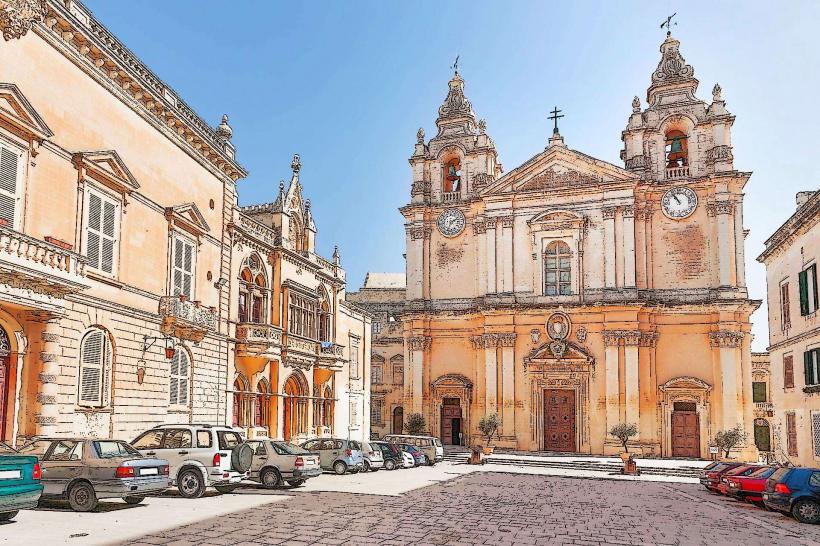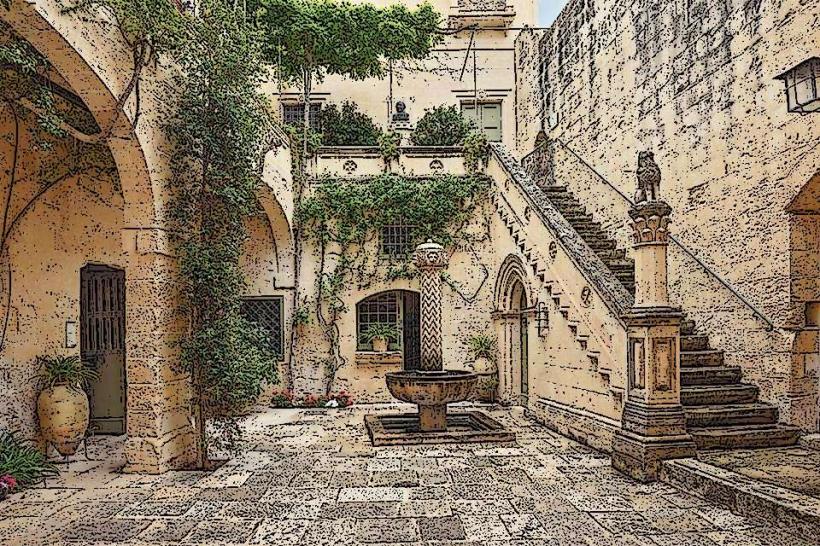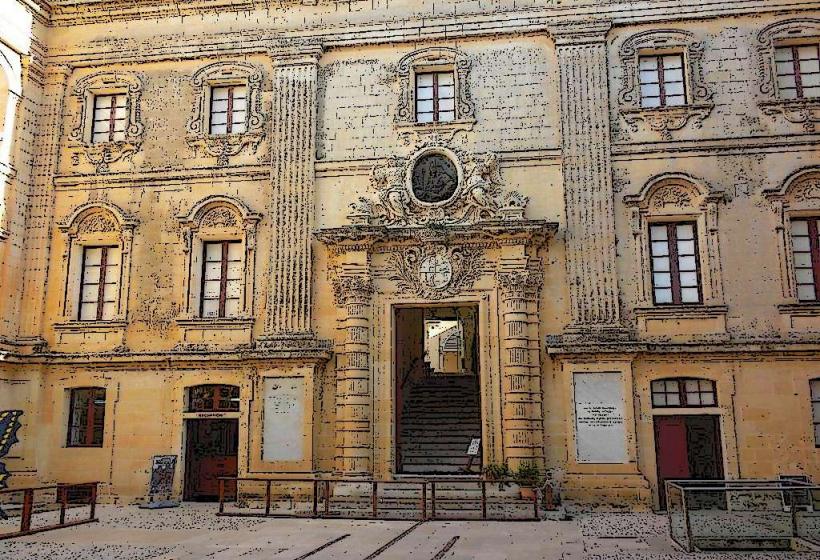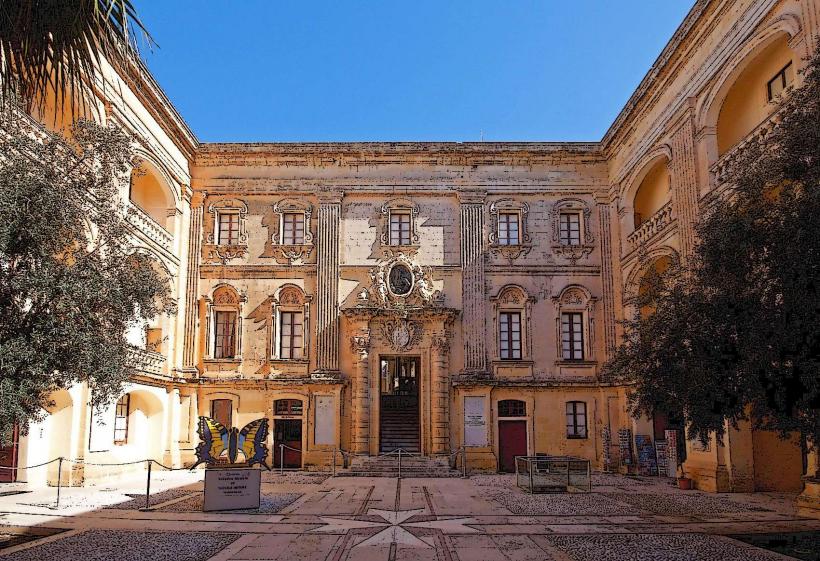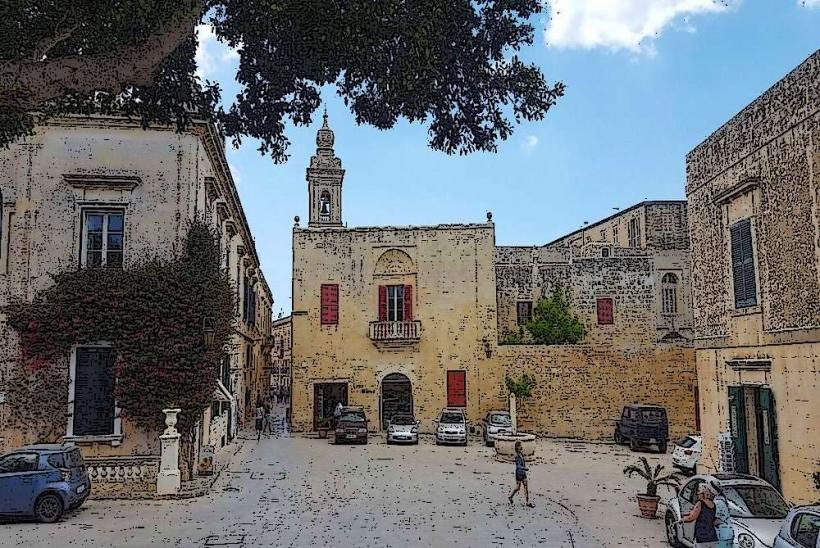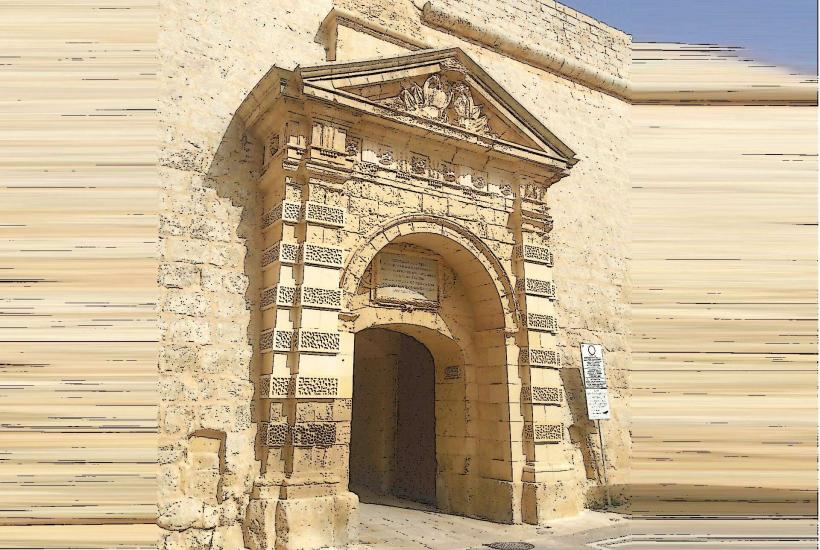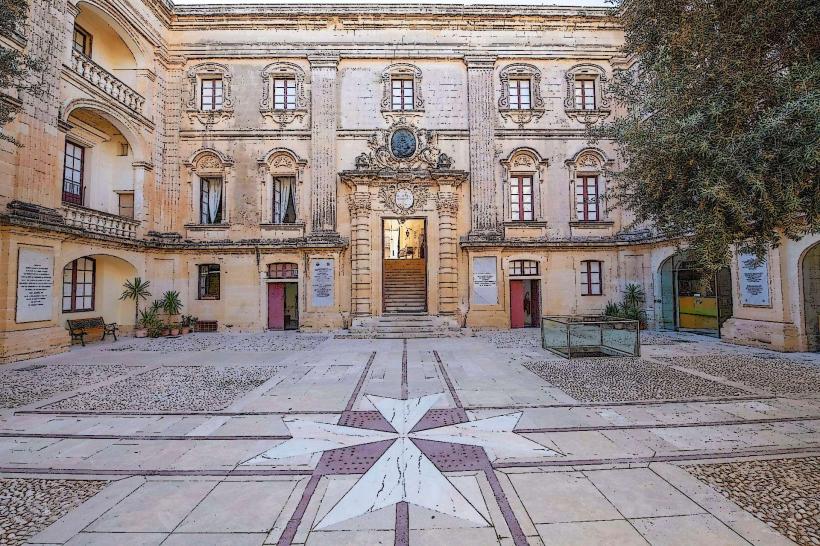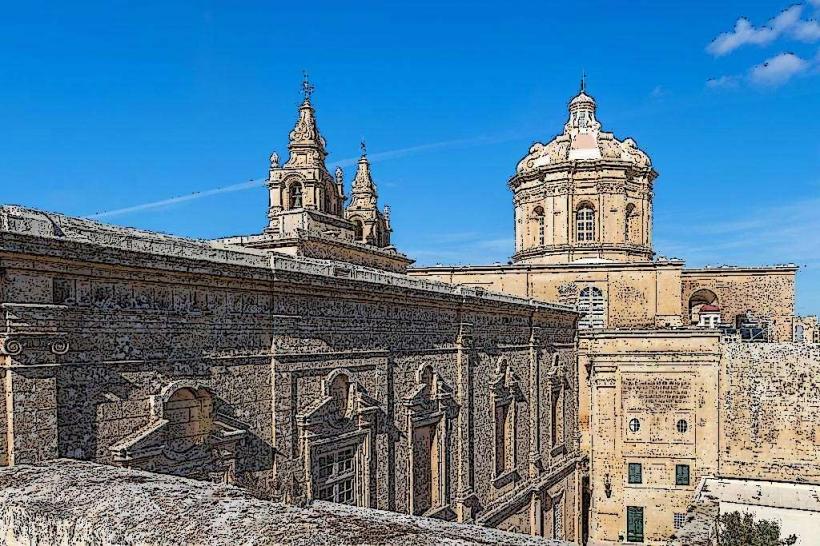Information
Landmark: Mdina GateCity: Mdina
Country: Malta
Continent: Europe
Mdina Gate, also known as Main Gate, is one of the most iconic landmarks in Malta, serving as the primary entrance to the historic city of Mdina. The gate stands as an architectural symbol of the city’s rich history, and its design reflects various influences over the centuries. Here's a detailed look at Mdina Gate:
Location and Historical Context
- Mdina is an ancient walled city located in the central part of Malta. Known as the "Silent City," Mdina served as the capital of the island until the Medieval period. The gate is situated on the western side of the city and marks the entrance to this historic place.
- Mdina has been a fortified settlement since antiquity, and over the years, the city has undergone multiple phases of development and fortification, with the gate evolving to reflect these changes.
Architecture and Design
- The current Mdina Gate was built in the late 17th century, specifically around 1724, during the rule of the Knights of St. John. It replaced an earlier gate that had been in place since the Medieval period.
- The design of the gate is a mix of Baroque and fortified architecture, in line with the style preferred by the Knights of St. John during their rule in Malta.
- Baroque Influences: The ornate design features a Triumphal Arch style, which was common in Baroque architecture. This design aimed to impress and project authority while providing a practical defensive function.
- Fortified Design: The gate has a double archway with a central section that acts as the main passageway, while the upper part includes defensive features like battlements.
- The gate is flanked by two towers, which were added to enhance its defensive capabilities.
Key Features of Mdina Gate
Grand Entrance: The gate features a large arched entrance with a set of iron doors. This provides a dramatic entry into the city, and the architecture is designed to showcase both strength and elegance.
Coat of Arms: Above the archway, visitors can see the coat of arms of the Order of St. John, which signifies the Knights’ authority over the island during the time the gate was constructed.
Statue of St. Roque: The gate also features a statue of St. Roque, a patron saint of plague sufferers, as a protective figure over the city, as many of the gates built during the Knights' rule often included statues of saints for both protection and spiritual significance.
Baroque Facade: The gate’s façade is adorned with Baroque details, including curved and straight lines, and decorative elements that reflect the artistry of the time. This is part of the wider trend seen in Malta’s architecture during the rule of the Knights of St. John.
Defensive Elements: The fortifications around the gate are designed to protect Mdina from any potential invaders. The presence of battlements and the towers that flank the gate were essential for the city’s defense during times of siege or military threat.
Historical Significance
- Mdina’s fortifications and gates were crucial to the city’s role as the capital of Malta. As the city’s primary entrance, the Mdina Gate was a strategic point of entry and defense. The current gate was designed with both military defense and aesthetic grandeur in mind, reflecting the importance of both practical defense and the representation of the Knights’ power.
- The gate also served as a symbolic entry point for visitors and dignitaries arriving in the capital. It marked the transition from the rural surroundings to the sophisticated, fortified city of Mdina.
Restoration and Modern Use
- Mdina Gate underwent a significant restoration project in the 20th century, which preserved its original features while enhancing its structural integrity. The gate remains an essential part of Mdina’s heritage and continues to attract visitors from around the world.
- Today, the Mdina Gate still serves as the main entry into the city, welcoming visitors to the narrow streets, historic buildings, and rich cultural heritage that Mdina offers.
Cultural and Tourism Impact
- Mdina Gate is not only an important historical monument but also a key tourist attraction. The city of Mdina, with its stunning Medieval and Baroque architecture, is one of the most visited locations in Malta. Mdina Gate plays a central role in the overall tourist experience as it sets the tone for the historic city’s visual and cultural appeal.
- The gate is also a popular backdrop for photography and has even appeared in numerous film and television productions. Most notably, it was used as a filming location for the TV series "Game of Thrones". The gate was portrayed as the entrance to King’s Landing, one of the central locations in the show, bringing even more international attention to its striking beauty.
Nearby Attractions
- Mdina’s Narrow Streets: Once inside the city, visitors can explore the narrow, winding streets of Mdina, which are lined with historic palaces, churches, and museums.
- St. Paul’s Cathedral: This is one of the most important landmarks in Mdina, and it's located near the main square, just a short walk from Mdina Gate.
- The Mdina Dungeons: Located nearby, this attraction takes visitors through the darker history of the city, with exhibits related to its medieval past and the sometimes grim history of punishments and prisons.
Conclusion
Mdina Gate stands as an impressive example of Baroque military architecture and is one of the most notable landmarks in Mdina. It not only serves as a functional entrance to the city but also as a symbol of Malta’s medieval and military history. Whether you are interested in architecture, history, or simply exploring a picturesque ancient city, Mdina Gate is a must-see for anyone visiting Malta.

